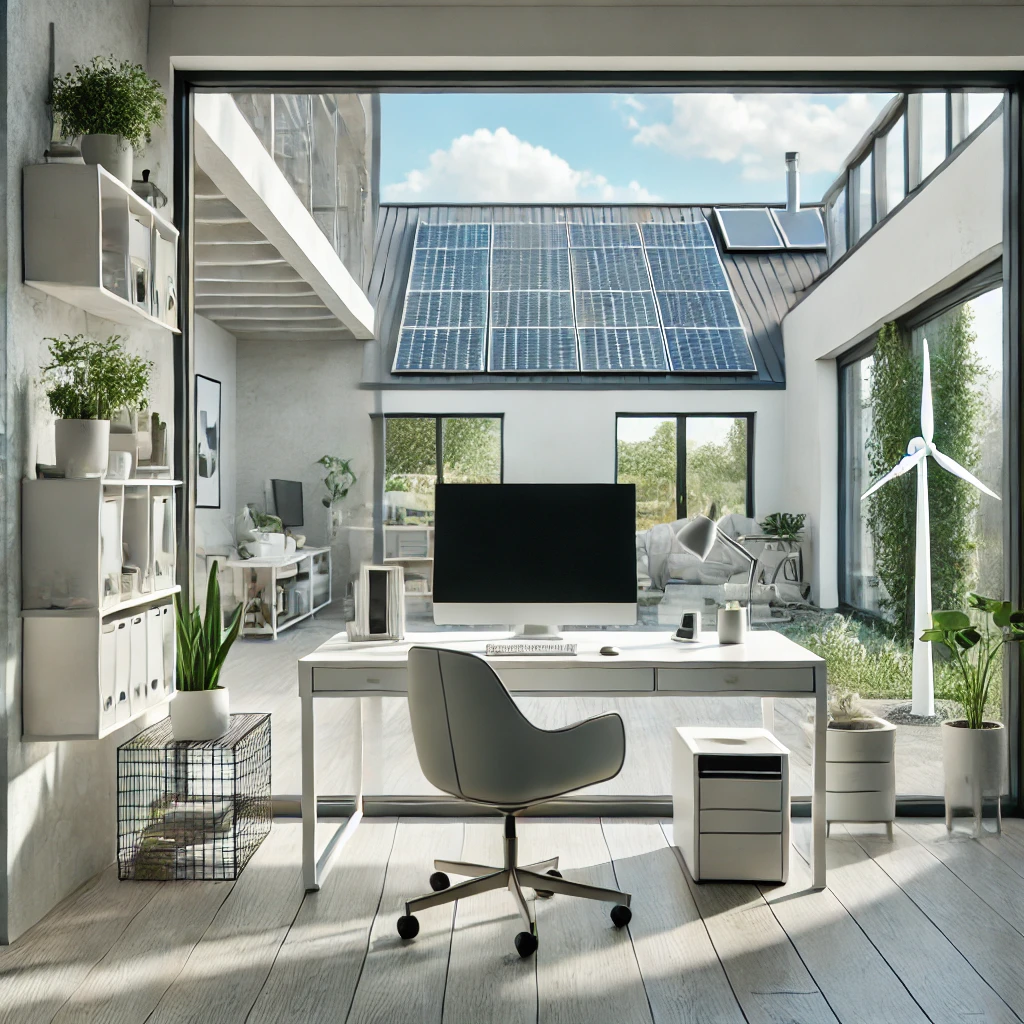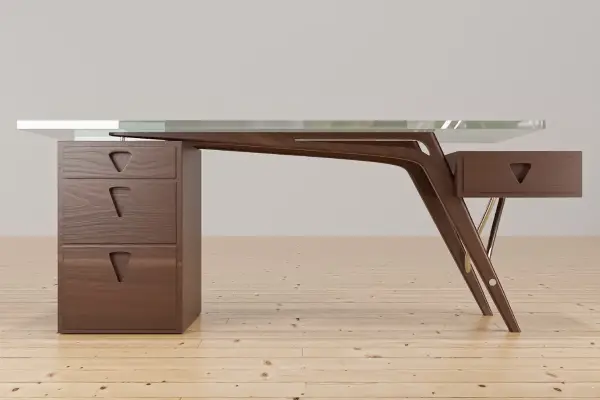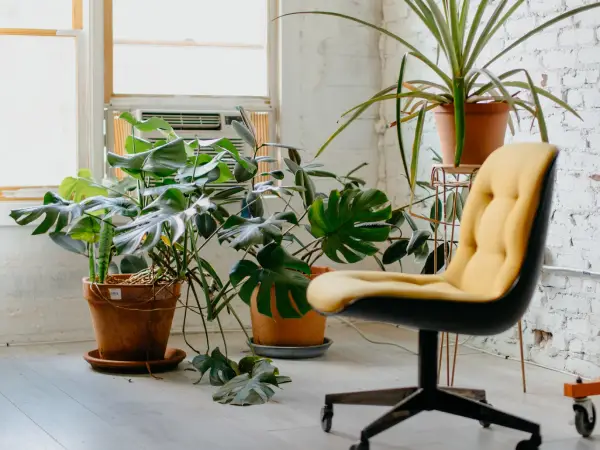In our contemporary, hectic environment filled with distractions and constant demands on our attention, establishing a workspace that promotes concentration and productivity has become increasingly vital. A growing trend in achieving this is through minimalist workspace organization. Embracing minimalism goes beyond mere appearances; it serves as a potent method to boost effectiveness, alleviate stress, and stimulate creativity.
At its core, a minimalist workspace prioritizes clarity and functionality. By stripping away unnecessary clutter and distractions, you create an environment where you can truly thrive. Whether you work from home or in a bustling office, the principles of minimalism can be applied to transform your workspace into a haven of productivity.
Throughout this article, we’ll explore the best practices for organizing a minimalist workspace that not only looks sleek and tidy but also supports your mental clarity and professional success. From decluttering tips to selecting essential furniture and maintaining a streamlined digital environment, you’ll discover practical strategies to optimize your workspace for peak performance. Let’s dive into the world of minimalist workspace organization and unlock the secrets to a more productive workday.
Understanding Minimalism in Workspace Organization
Minimalism, at its core, is about focusing on what truly matters by eliminating anything that doesn’t serve a purpose. When applied to workspace organization, minimalism emphasizes simplicity, functionality, and intentionality. A minimalist workspace is free from clutter and distractions, allowing you to concentrate on your tasks and boost your productivity.
Definition of a Minimalist Workspace
A minimalist workspace is characterized by its clean lines, uncluttered surfaces, and a deliberate selection of tools and decor. The goal is to create an environment that is both aesthetically pleasing and highly functional. This means having only the essentials within reach and ensuring that everything has its place. The result is a workspace that feels spacious, calm, and conducive to focused work.
Key Principles of Minimalism in Organization
Simplicity: Strive for simplicity in both design and functionality. Choose furniture and tools that serve multiple purposes and avoid unnecessary items.
Intentionality: Be intentional about what you include in your workspace. Each item should have a clear purpose and contribute to your productivity.
Clarity: A clutter-free workspace leads to a clear mind. Remove anything that distracts or creates visual noise.
Efficiency: Streamline processes and organize tools for easy access. This reduces time spent searching for items and increases efficiency.
Aesthetics: While functionality is key, a minimalist workspace should also be visually appealing. A clean and organized environment can inspire creativity and motivation.
How Minimalism Enhances Productivity and Focus
A minimalist workspace eliminates the distractions that can hinder your focus. By reducing visual and physical clutter, you can better concentrate on your tasks. Additionally, a well-organized space can lead to quicker decision-making and fewer interruptions, as everything you need is easily accessible and neatly arranged.
Moreover, minimalism promotes a sense of calm and order. When your environment is orderly, your mind can relax and work more efficiently. This reduction in stress can lead to greater creativity and problem-solving abilities.
Incorporating minimalism into your workspace is not about having the bare minimum but about having the right amount of everything. It’s about creating a balance where your workspace supports your goals and enhances your overall work experience. As we delve into the next sections, we’ll explore practical steps to achieve and maintain a productive minimalist workspace.
Decluttering Your Workspace
Decluttering is the first and most crucial step in creating a minimalist workspace. By removing unnecessary items and organizing what remains, you set the foundation for a productive and focused work environment. Here’s a detailed guide to help you effectively declutter your workspace.
Importance of Decluttering
A cluttered workspace can lead to a cluttered mind. Excess items and disorganization can create distractions, increase stress, and reduce your efficiency. Decluttering not only clears physical space but also helps clear mental space, allowing you to focus better and work more efficiently. It’s about creating an environment where everything has a purpose and a place, leading to a more streamlined and productive workflow.
Steps to Declutter Effectively
Assessing Your Current Setup
Start by taking a good look at your current workspace. Identify items that you regularly use and those that just take up space. Consider the functionality and necessity of each item. Ask yourself if each item contributes to your productivity or if it’s merely adding to the clutter.
Sorting and Categorizing Items
Once you’ve assessed your workspace, sort everything into categories. Create separate piles for items to keep, items to store, items to donate or sell, and items to discard. This categorization will help you make clear decisions about what stays and what goes.
Purging Unnecessary Items
Be ruthless in your decision-making. If an item doesn’t serve a clear purpose or hasn’t been used in the past few months, it’s time to let it go. Donate or sell items that are still in good condition but no longer needed. Recycle or dispose of items that are broken or no longer functional.
Organizing Essentials
After purging unnecessary items, it’s time to organize what remains. Designate specific areas for different categories of items. Use drawers, shelves, and storage boxes to keep your workspace neat and organized. Make sure that frequently used items are easily accessible, while less frequently used items can be stored away.
Maintaining a Decluttered Workspace
Decluttering is not a one-time task; it’s an ongoing process. Establish a regular routine to keep your workspace organized. Spend a few minutes at the end of each day tidying up and putting things back in their designated places. Periodically reassess your workspace to ensure that it continues to meet your needs and remains clutter-free.
By following these steps, you can create a decluttered, organized workspace that fosters productivity and focus. In the next section, we’ll discuss the essential elements that make up a minimalist workspace, ensuring that your newly decluttered space remains functional and efficient.
Essential Elements of a Minimalist Workspace
Creating a minimalist workspace involves more than just decluttering; it’s about carefully selecting and organizing the essential elements that contribute to a functional, efficient, and aesthetically pleasing environment. Here are the key components to consider when setting up your minimalist workspace.
Functional Furniture
Ergonomic Desk and Chair
The foundation of any productive workspace is a comfortable and ergonomic desk and chair. Your desk should be spacious enough to accommodate your work essentials without feeling cluttered. An adjustable chair that supports good posture is crucial for preventing discomfort and enhancing focus. Invest in quality furniture that promotes health and efficiency.
Storage Solutions
Effective storage solutions are vital in a minimalist workspace. Opt for drawers, shelves, and cabinets that help keep your essentials organized and out of sight. Use drawer dividers and organizers to separate items and maintain order. Wall-mounted shelves can free up desk space while providing easy access to frequently used items.
Digital Minimalism
Organizing Computer Files
Digital clutter can be just as distracting as physical clutter. Take time to organize your computer files by creating a logical folder structure. Regularly delete or archive files that are no longer needed. Utilize cloud storage solutions to back up important documents and reduce the amount of data stored on your computer.
Streamlining Software and Apps
Evaluate the software and apps you use daily. Keep only those that are essential for your work and productivity. Remove redundant or seldom-used applications to streamline your digital workspace. Utilize productivity tools that integrate multiple functions to minimize the number of programs you need to manage.
Lighting and Ambiance
Natural Light Utilization
Natural light has a significant impact on your mood and productivity. Position your desk near a window to take advantage of natural light. If this isn’t possible, use full-spectrum light bulbs that mimic natural light to reduce eye strain and create a pleasant working environment.
Minimalist Décor Tips
While a minimalist workspace emphasizes simplicity, a few well-chosen decorative items can enhance the ambiance without adding clutter. Opt for a clean and neutral color palette that promotes calm and focus. Consider adding a few plants to bring a touch of nature indoors, which can improve air quality and boost your mood.
Personalization Without Clutter
Adding Personal Touches
Personalizing your workspace can make it more inviting and motivating. Choose a few personal items that inspire you, such as a piece of art, a motivational quote, or a photo. Keep these items to a minimum to maintain the clean, uncluttered aesthetic of a minimalist workspace.
Avoiding Over-Decoration
It’s easy to overdo it with decorations. To maintain a minimalist approach, adhere to the principle of less is more. Select only those items that have significant meaning or practical use, and avoid filling your space with unnecessary décor. This helps maintain a clear and focused environment.
By carefully selecting and organizing the essential elements of your workspace, you can create a minimalist environment that is both functional and aesthetically pleasing. This balanced approach ensures that your workspace supports your productivity and enhances your overall work experience. In the next section, we’ll explore organizational systems that further boost efficiency in a minimalist workspace.
Organizational Systems for Efficiency
A minimalist workspace thrives on well-designed organizational systems that keep everything in its place and promote a streamlined workflow. By implementing these systems, you can enhance efficiency, reduce time spent searching for items, and maintain a clutter-free environment.
Implementing a Paperless System
Digital Note-Taking Apps
Transitioning to a paperless system is a key aspect of a minimalist workspace. Digital note-taking apps, such as Evernote, OneNote, or Notion, allow you to keep all your notes, ideas, and to-do lists in one place. These apps often come with features like tagging, searching, and cloud syncing, making it easy to organize and access your notes from any device.
Cloud Storage Solutions
Cloud storage solutions like Google Drive, Dropbox, or OneDrive are essential for a paperless workspace. These platforms provide secure, accessible storage for your documents and files, eliminating the need for physical copies. Organize your digital files into folders and subfolders, and regularly back up important data to ensure you never lose valuable information.
Minimalist Desk Setups
Keeping Only Essentials on the Desk
A minimalist desk setup focuses on keeping only the essentials within arm’s reach. Limit the items on your desk to those you use daily, such as your computer, a notebook, and a pen. Store other items in drawers or shelves to maintain a clean and uncluttered workspace. This simplicity not only looks neat but also reduces distractions and enhances focus.
Cable Management Tips
Unmanaged cables can quickly turn a minimalist workspace into a tangled mess. Use cable management solutions like cable clips, sleeves, or under-desk trays to keep cords organized and out of sight. Labeling cables can also help you quickly identify and manage them when needed. Wireless devices, such as a keyboard and mouse, can further reduce cable clutter.
Personalization Without Clutter
Adding Personal Touches
Personalizing your workspace can make it more inviting and motivating. Choose a few personal items that inspire you, such as a piece of art, a motivational quote, or a photo. Keep these items to a minimum to maintain the clean, uncluttered aesthetic of a minimalist workspace.
Avoiding Over-Decoration
It’s easy to overdo it with decorations. To maintain a minimalist approach, adhere to the principle of less is more. Select only those items that have significant meaning or practical use, and avoid filling your space with unnecessary décor. This helps maintain a clear and focused environment.
Maintaining a Decluttered Workspace
Daily Maintenance Routines
Establishing a daily maintenance routine is crucial for sustaining a minimalist workspace. Spend a few minutes at the end of each day tidying up your desk, putting items back in their designated places, and organizing your digital files. This daily habit prevents clutter from accumulating and ensures your workspace remains organized and efficient.
Regular Assessments and Adjustments
Regularly assess your workspace to ensure it continues to meet your needs and remains clutter-free. Periodically review the items in your workspace and make necessary adjustments. This might involve removing items that are no longer needed or reorganizing your setup to improve efficiency. Staying proactive about maintaining your minimalist workspace will help you adapt to changing needs and keep your environment optimal for productivity.
By implementing these organizational systems, you can create a minimalist workspace that enhances efficiency and supports your productivity. In the next section, we’ll discuss how to personalize your minimalist workspace without compromising its simplicity and functionality.
Personalization Without Clutter
Creating a minimalist workspace doesn’t mean you have to sacrifice personal touches that make your space uniquely yours. The key is to personalize thoughtfully, ensuring that the additions enhance rather than detract from the minimalist aesthetic. Here’s how to add character to your workspace without compromising its simplicity and functionality.
Adding Personal Touches
Inspirational Items
Incorporating a few well-chosen inspirational items can make your workspace more motivating and enjoyable. This might include a favorite quote framed on the wall, a small piece of art, or a photo of a loved one. These items should be carefully selected and limited in number to avoid overwhelming your workspace with unnecessary decor.
Plants and Greenery
Plants are a great way to bring a touch of nature into your workspace, which can boost your mood and productivity. Choose low-maintenance plants that thrive indoors, such as succulents, snake plants, or pothos. A single plant on your desk or a small cluster on a nearby shelf can add life to your space without creating clutter.
Avoiding Over-Decoration
Strategies for Maintaining Simplicity
To maintain a minimalist approach, follow the principle of “less is more.” Start by selecting a few meaningful items that contribute to the ambiance and motivation of your workspace. Avoid the temptation to fill every empty space with decorations. Instead, focus on creating a balanced and harmonious environment where each item has a purpose.
Functional Personalization
Opt for personalization that serves a dual purpose. For example, choose a stylish yet functional desk lamp, a beautifully designed notebook, or an elegant organizer. This way, your personalized items also contribute to the functionality and organization of your workspace.
Creating a Balance
Color Schemes and Themes
Stick to a cohesive color scheme that promotes calm and focus. Neutral tones with occasional pops of color can create a serene and inviting environment. Choose a theme that resonates with you but keep it simple to avoid visual clutter. For instance, a monochromatic palette with natural accents can evoke a sense of tranquility and order.
Mindful Arrangement
Be mindful of the arrangement of your personal items. Group similar items together to create a sense of order. Use symmetry and alignment to maintain a clean look. A well-organized and thoughtfully arranged workspace not only looks good but also supports mental clarity and productivity.
Maintaining Personalization
Regular Reviews
Periodically review the personal items in your workspace to ensure they still serve a purpose and bring you joy. As your tastes and needs evolve, you may find that certain items no longer fit. Don’t hesitate to remove or replace them to keep your workspace fresh and inspiring.
Seasonal Updates
Consider updating your workspace decor with the seasons. This can be a simple and enjoyable way to keep your environment stimulating without accumulating clutter. For example, you might switch out a desk photo or change your plant selection to reflect the season, keeping your workspace dynamic and engaging.
By adding personal touches thoughtfully and avoiding over-decoration, you can create a minimalist workspace that is both functional and uniquely yours. This balance ensures that your workspace remains an inspiring place that supports your productivity and well-being. In the final section, we will discuss how to maintain and sustain your minimalist workspace over the long term.
Maintaining and Sustaining Your Minimalist Workspace
Achieving a minimalist workspace is just the beginning; maintaining and sustaining it is an ongoing process. By establishing effective routines and regularly reassessing your setup, you can ensure your workspace remains an organized, efficient, and inspiring environment.
Daily Maintenance Routines
Cleaning and Organizing Habits
Incorporate simple cleaning and organizing habits into your daily routine to keep your workspace clutter-free. Spend a few minutes at the end of each day tidying up your desk, putting items back in their designated places, and wiping down surfaces. This daily effort prevents clutter from accumulating and keeps your workspace ready for productive work each morning.
Managing Digital Clutter
Digital clutter can be just as disruptive as physical clutter. Take time each day to manage your digital workspace. Close unnecessary browser tabs, organize your desktop, and clear out your email inbox. Regularly update and maintain your digital files to ensure easy access and minimize frustration.
Regular Assessments and Adjustments
Adapting to Changing Needs
Your workspace needs may change over time, so it’s important to regularly assess and adjust your setup. Periodically review the items in your workspace and evaluate their usefulness. Remove or replace items that no longer serve a purpose or contribute to your productivity. This proactive approach ensures your workspace continues to meet your evolving needs.
Reevaluating Workspace Efficiency
Take a step back and reassess the overall efficiency of your workspace every few months. Consider whether your current setup supports your workflow and productivity. Are there any areas that feel cluttered or inefficient? Make necessary adjustments to improve organization and streamline your processes.
Seasonal Deep Cleaning
Decluttering and Reorganizing
Conduct a seasonal deep clean to thoroughly declutter and reorganize your workspace. This involves a more in-depth review of your items and a comprehensive cleaning of your space. Sort through your belongings, discard or donate unused items, and reorganize your storage solutions. This seasonal reset helps maintain a fresh and functional workspace.
Refreshing Your Space
Use this opportunity to refresh your workspace decor. Swap out seasonal items, update personal touches, and perhaps even rearrange your furniture for a new perspective. A refreshed workspace can reinvigorate your motivation and creativity, making it easier to maintain a productive environment.
Sustainable Practices
Reducing Paper Use
Adopt sustainable practices to maintain a minimalist and eco-friendly workspace. Reduce paper use by going digital whenever possible. Utilize digital note-taking apps, cloud storage, and electronic communications to minimize the need for physical documents. This not only reduces clutter but also supports environmental sustainability.
Choosing Quality Over Quantity
When selecting items for your workspace, prioritize quality over quantity. Invest in durable, high-quality furniture and tools that will last longer and perform better. Choosing quality items reduces the need for frequent replacements, helping you maintain a minimalist setup while also being environmentally conscious.
Building a Minimalist Mindset
Mindfulness and Intentionality
Develop a minimalist mindset by practicing mindfulness and intentionality in your workspace and beyond. Be deliberate about the items you bring into your space and the habits you cultivate. Focus on what truly matters and contributes to your productivity and well-being.
Continuous Improvement
Embrace continuous improvement as a core principle of your minimalist approach. Regularly seek ways to enhance your workspace and streamline your processes. Stay open to new ideas and be willing to adapt your setup to better support your goals and productivity.
By maintaining daily routines, regularly assessing your workspace, and adopting sustainable practices, you can sustain a minimalist workspace that fosters productivity and well-being. This ongoing commitment ensures that your workspace remains an efficient, inspiring, and clutter-free environment.
Conclusion
Creating and maintaining a minimalist workspace is an ongoing journey that brings numerous benefits to your professional and personal life. By embracing minimalist principles, you can cultivate an environment that enhances focus, reduces stress, and boosts productivity. Let’s recap the key points covered in this article:
Recap of Benefits of a Minimalist Workspace
A minimalist workspace is more than just a clean and organized environment; it’s a powerful tool for improving your work life. By eliminating clutter and distractions, you can:
Enhance Focus and Productivity: A streamlined workspace allows you to concentrate on your tasks without unnecessary interruptions.
Reduce Stress: An organized environment promotes a sense of calm and control, reducing the anxiety often associated with clutter.
Boost Creativity: A clear and tidy space provides a blank canvas for new ideas and creative thinking.
Improve Efficiency: With everything in its place, you spend less time searching for items and more time being productive.
Final Tips for Optimizing Productivity Through Minimalism
As you embark on or continue your minimalist journey, keep these final tips in mind:
Start Small: Begin with one area of your workspace and gradually apply minimalist principles to other areas.
Be Consistent: Establish daily and weekly routines to maintain a clutter-free environment.
Stay Intentional: Regularly assess the items in your workspace and keep only those that serve a purpose and add value.
Embrace Digital Solutions: Utilize digital tools and apps to reduce paper use and streamline your workflow.
Personalize Thoughtfully: Add personal touches that inspire you, but avoid over-decorating to maintain a clean, focused space.
Encouragement to Start Organizing and Creating a Minimalist Workspace Today
Taking the first step towards a minimalist workspace can feel daunting, but the rewards are well worth the effort. Start by assessing your current setup, decluttering, and implementing the essential elements and organizational systems discussed in this article. Remember, minimalism is not about perfection but about creating a space that supports your goals and enhances your work experience.
Whether you work from home, in an office, or in a hybrid environment, a minimalist workspace can significantly impact your productivity and well-being. Embrace the journey with patience and mindfulness, and enjoy the benefits of a workspace that truly works for you.
Now is the perfect time to start organizing and creating your productive minimalist workspace. With each step you take, you’ll move closer to a more efficient, inspiring, and clutter-free environment that empowers you to achieve your best work.






